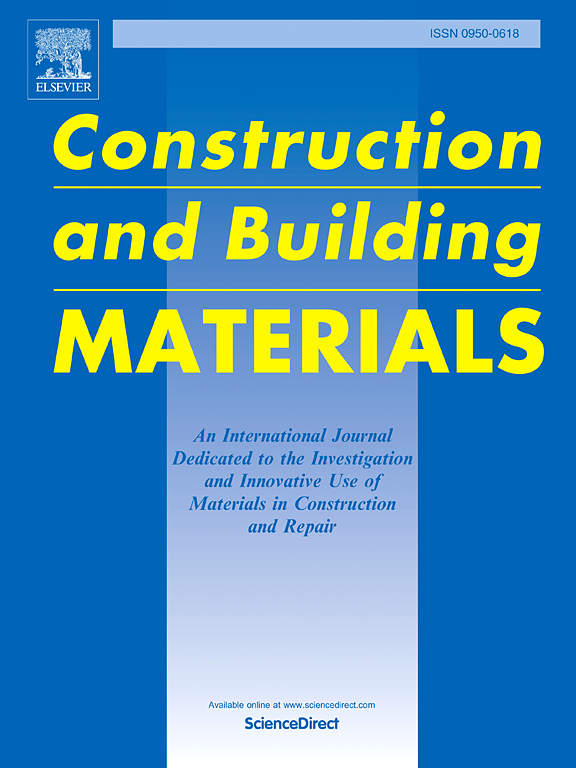Evaluation of electrical resistivity, hydration, and durability against sulfate attack of limestone calcined clay cement (LC3) with various kaolinite content at high-replacement levels
IF 7.4
1区 工程技术
Q1 CONSTRUCTION & BUILDING TECHNOLOGY
引用次数: 0
Abstract
Cement and concrete play a crucial role in modern global infrastructure. The broad availability and low cost of cement production are the primary reasons for its widespread use in construction, contributing to approximately 5–8 % of CO2 emissions. Using supplementary cementitious materials (SCMs) to substitute a portion of the clinker in cement has proven to be the most effective method for curbing CO2 emissions in the international cement industry. Limestone calcined clay cement (LC3) permits the substitution of cement with calcined clay and limestone. This study compares the properties of LC3 samples at varying levels of clinker substitution using 11 different kaolinite clays with Portland cement. The results showed that the LC3 samples with high pozzolanic reaction, even with a kaolinite content of 14.96 %, reached a better strength than Portland cement from 7 days onwards. The electrical resistivity of LC3 samples increased with the increase of clinker replacement. At 60 % clinker replacement, the electrical resistivity of LC3 samples at 28 days was between 4.1 and 20 times that of the PC sample. The expansion rate of LC3 mortar samples under sulfate attack was significantly lower than that of the PC sample. These findings suggest that increasing clinker replacement in LC3 samples leads to refined pores, enhanced electrical resistivity, and improved durability against sulfate attack.
求助全文
约1分钟内获得全文
求助全文
来源期刊

Construction and Building Materials
工程技术-材料科学:综合
CiteScore
13.80
自引率
21.60%
发文量
3632
审稿时长
82 days
期刊介绍:
Construction and Building Materials offers an international platform for sharing innovative and original research and development in the realm of construction and building materials, along with their practical applications in new projects and repair practices. The journal publishes a diverse array of pioneering research and application papers, detailing laboratory investigations and, to a limited extent, numerical analyses or reports on full-scale projects. Multi-part papers are discouraged.
Additionally, Construction and Building Materials features comprehensive case studies and insightful review articles that contribute to new insights in the field. Our focus is on papers related to construction materials, excluding those on structural engineering, geotechnics, and unbound highway layers. Covered materials and technologies encompass cement, concrete reinforcement, bricks and mortars, additives, corrosion technology, ceramics, timber, steel, polymers, glass fibers, recycled materials, bamboo, rammed earth, non-conventional building materials, bituminous materials, and applications in railway materials.
 求助内容:
求助内容: 应助结果提醒方式:
应助结果提醒方式:


